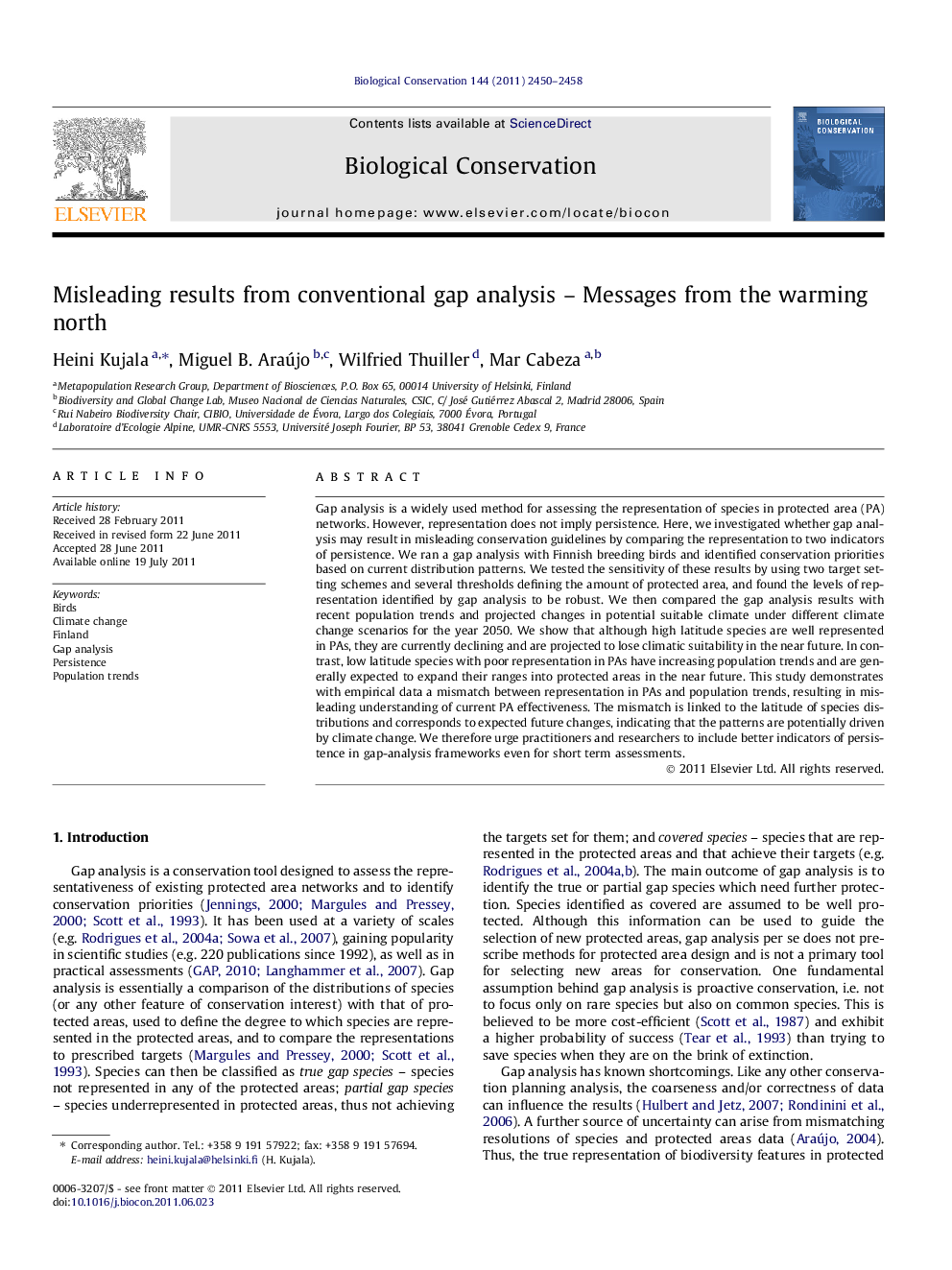| Article ID | Journal | Published Year | Pages | File Type |
|---|---|---|---|---|
| 4385413 | Biological Conservation | 2011 | 9 Pages |
Gap analysis is a widely used method for assessing the representation of species in protected area (PA) networks. However, representation does not imply persistence. Here, we investigated whether gap analysis may result in misleading conservation guidelines by comparing the representation to two indicators of persistence. We ran a gap analysis with Finnish breeding birds and identified conservation priorities based on current distribution patterns. We tested the sensitivity of these results by using two target setting schemes and several thresholds defining the amount of protected area, and found the levels of representation identified by gap analysis to be robust. We then compared the gap analysis results with recent population trends and projected changes in potential suitable climate under different climate change scenarios for the year 2050. We show that although high latitude species are well represented in PAs, they are currently declining and are projected to lose climatic suitability in the near future. In contrast, low latitude species with poor representation in PAs have increasing population trends and are generally expected to expand their ranges into protected areas in the near future. This study demonstrates with empirical data a mismatch between representation in PAs and population trends, resulting in misleading understanding of current PA effectiveness. The mismatch is linked to the latitude of species distributions and corresponds to expected future changes, indicating that the patterns are potentially driven by climate change. We therefore urge practitioners and researchers to include better indicators of persistence in gap-analysis frameworks even for short term assessments.
► We compare gap analysis results to indicators of persistence and find contradicting patterns. ► Northern species have declining population trends despite of being well protected. ► Many southern species are thriving although being identified as gaps or partial gaps. ► The mismatch seems to follow expected distribution changes caused by climate change. ► Gap analysis based on static distribution data may give misleading conservation guidance.
